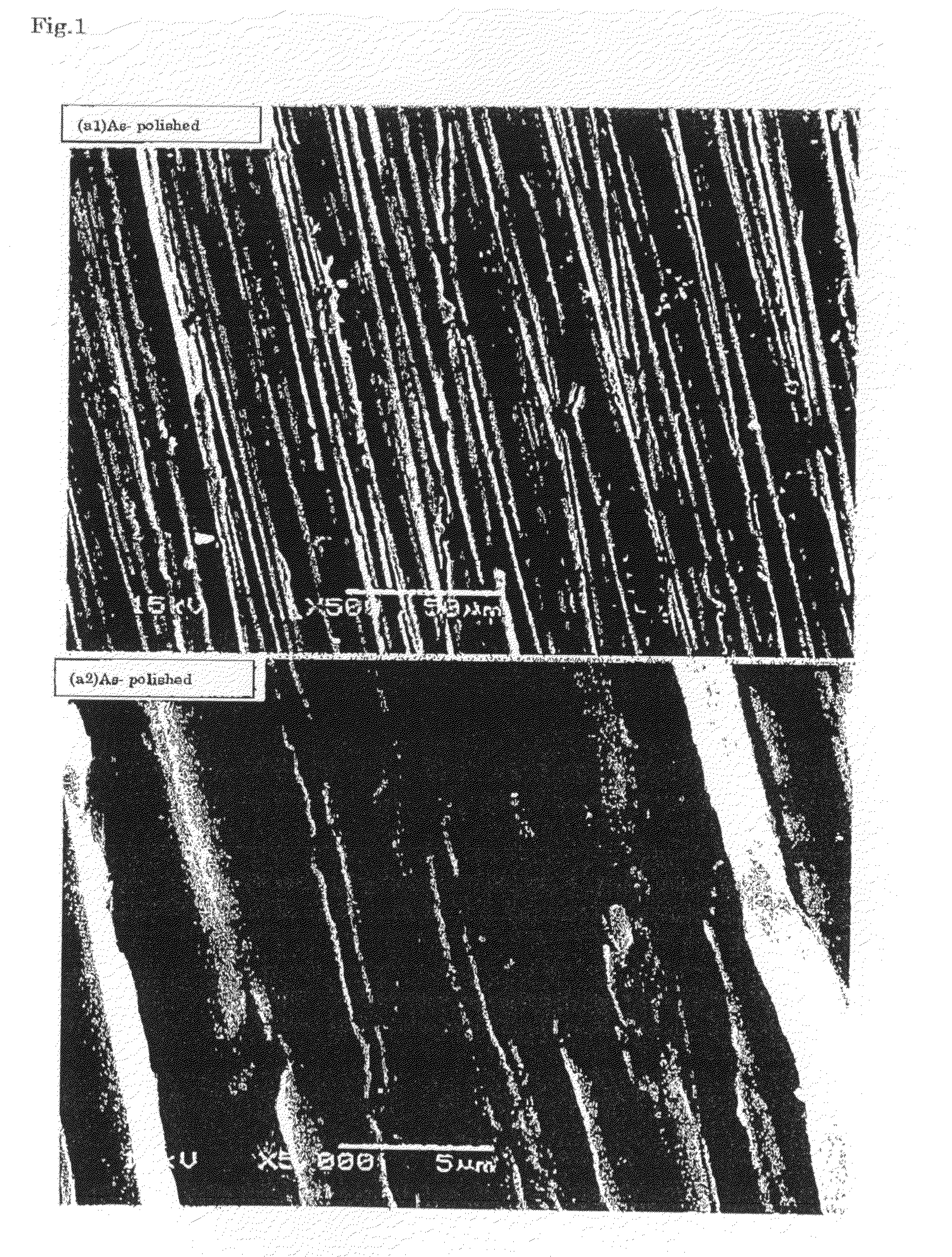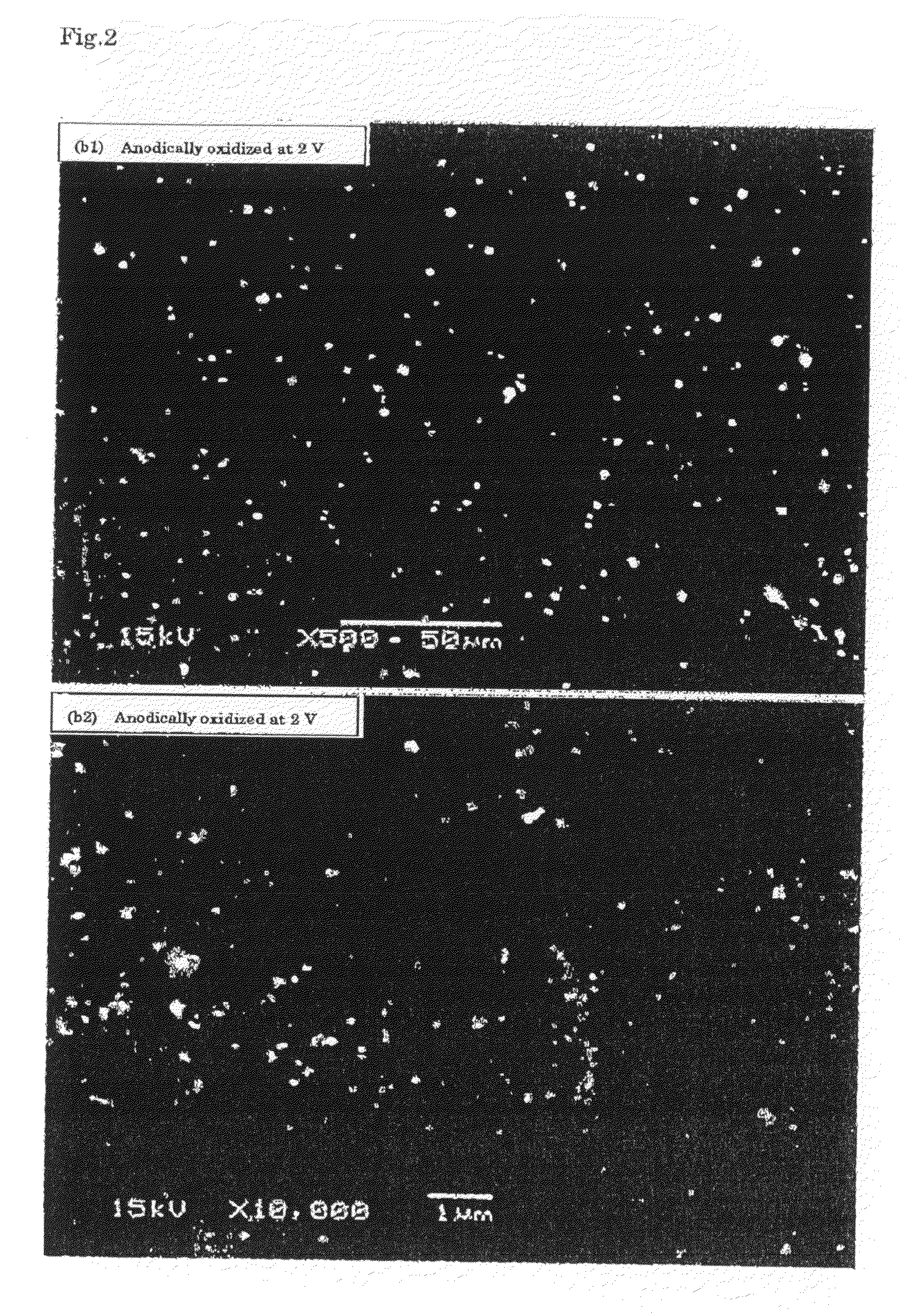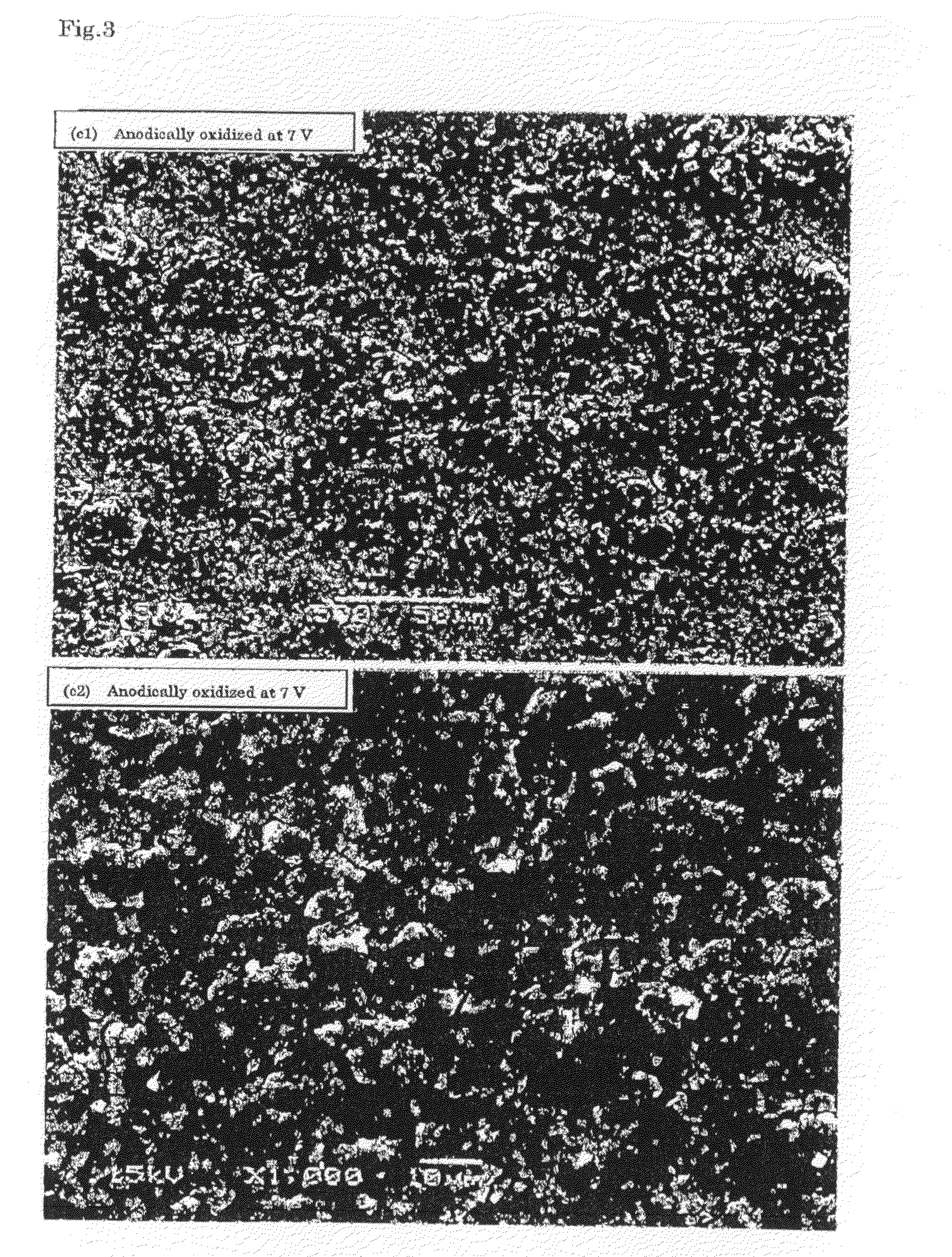Biodegradable Magnesium Based Metallic Material for Medical Use
a biodegradable magnesium and metallic material technology, applied in the field of biodegradable magnesium based metallic material for medical use, can solve the problems of difficult fine adjustment of degradation rate, limited device size or space to be implanted, and inability to suitably use biodegradable magnesium based metallic material as a device, etc., to achieve high compatibility with soft tissue, reduce mechanical strength, and increase connectivity between material and bon
- Summary
- Abstract
- Description
- Claims
- Application Information
AI Technical Summary
Benefits of technology
Problems solved by technology
Method used
Image
Examples
example 1
Control of Morphology of Anodic Oxide Film
[0072]The surface of a binary magnesium alloy (a) containing 0.3 atomic % of Y was polished and the polished binary magnesium alloy (a) was immersed in 1 N NaOH solution at room temperature, and anodically oxidized under a condition of (b) 2 V, (c) 7 V, (d) 10 V, (e) 20 V, (f) 100 V or (g) 200 V, whereby an anodic oxide film was formed on the surface of the binary magnesium alloy. In FIG. 1 and FIG. 2 to FIG. 7, scanning electron microscopic (SEM) images of the as-polished surface of a binary magnesium alloy (a), and the surfaces of anodic oxide films formed under the conditions of (b) to (f) are shown, respectively. In FIG. 1 and FIG. 2 to FIG. 7, for example, (a1) shows an observation image of the binary magnesium alloy (a) with a low magnification, and (a2) shows an observation image of the binary magnesium alloy (a) with a high magnification.
[0073]As is evident from (a1) and (a2) of FIG. 1, only polishing scars were observed on the as-po...
example 2
Control of Thickness of Anodic Oxide Film
[0077]The surface of a binary magnesium alloy containing 0.3 atomic % of Y was polished and the polished binary magnesium alloy (a) was immersed in 1 N NaOH solution at room temperature, and anodically oxidized under a condition of 2 V, 7 V, 20 V or 100 V, whereby an anodic oxide film was formed on the binary magnesium alloy. In FIG. 8, the thickness of an oxide film on the as-polished surface and the surface anodically oxidized under each condition of a binary magnesium alloy is shown. The film thickness was obtained by performing a compositional analysis of each surface by Auger electron spectroscopy (AES) while performing Ar gas sputtering and calculating it from a sputtering depth at which the oxygen concentration became 50% of that of the outer-most surface.
[0078]The thickness of the oxide film on the as-polished surface and on the surface anodically oxidized at 2 V and 20 V was in the order of nanometer, however, the thickness of the ox...
example 3
Control of Composition of Anodic Oxide Film
[0080]The surface of a binary magnesium alloy containing 0.3 atomic % of Y was polished and the polished binary magnesium alloy was immersed in 1 N NaOH solution at room temperature, and anodically oxidized under a condition of 2 V or 20 V, whereby an anodic oxide film was formed on the binary magnesium alloy.
[0081]FIG. 9 shows graphs showing the X-ray photoelectron spectroscopy (XPS) spectra of the as-polished surface and the surface anodically oxidized of a binary magnesium alloy. (a) shows Mg 2p electron spectra; (b) shows Mg KLL Auger electron spectra; and (c) shows Y 3d electron spectra.
[0082]With regard to the Mg 2p electron spectra shown in FIG. 9(a), almost no difference was observed among the respective samples. With regard to the Mg KLL Auger electron spectra shown in FIG. 9(b), a broad peak originated from the metal state was observed only in the case of the as-polished surface, and it was found that the oxide film on the as-poli...
PUM
 Login to View More
Login to View More Abstract
Description
Claims
Application Information
 Login to View More
Login to View More - R&D
- Intellectual Property
- Life Sciences
- Materials
- Tech Scout
- Unparalleled Data Quality
- Higher Quality Content
- 60% Fewer Hallucinations
Browse by: Latest US Patents, China's latest patents, Technical Efficacy Thesaurus, Application Domain, Technology Topic, Popular Technical Reports.
© 2025 PatSnap. All rights reserved.Legal|Privacy policy|Modern Slavery Act Transparency Statement|Sitemap|About US| Contact US: help@patsnap.com



